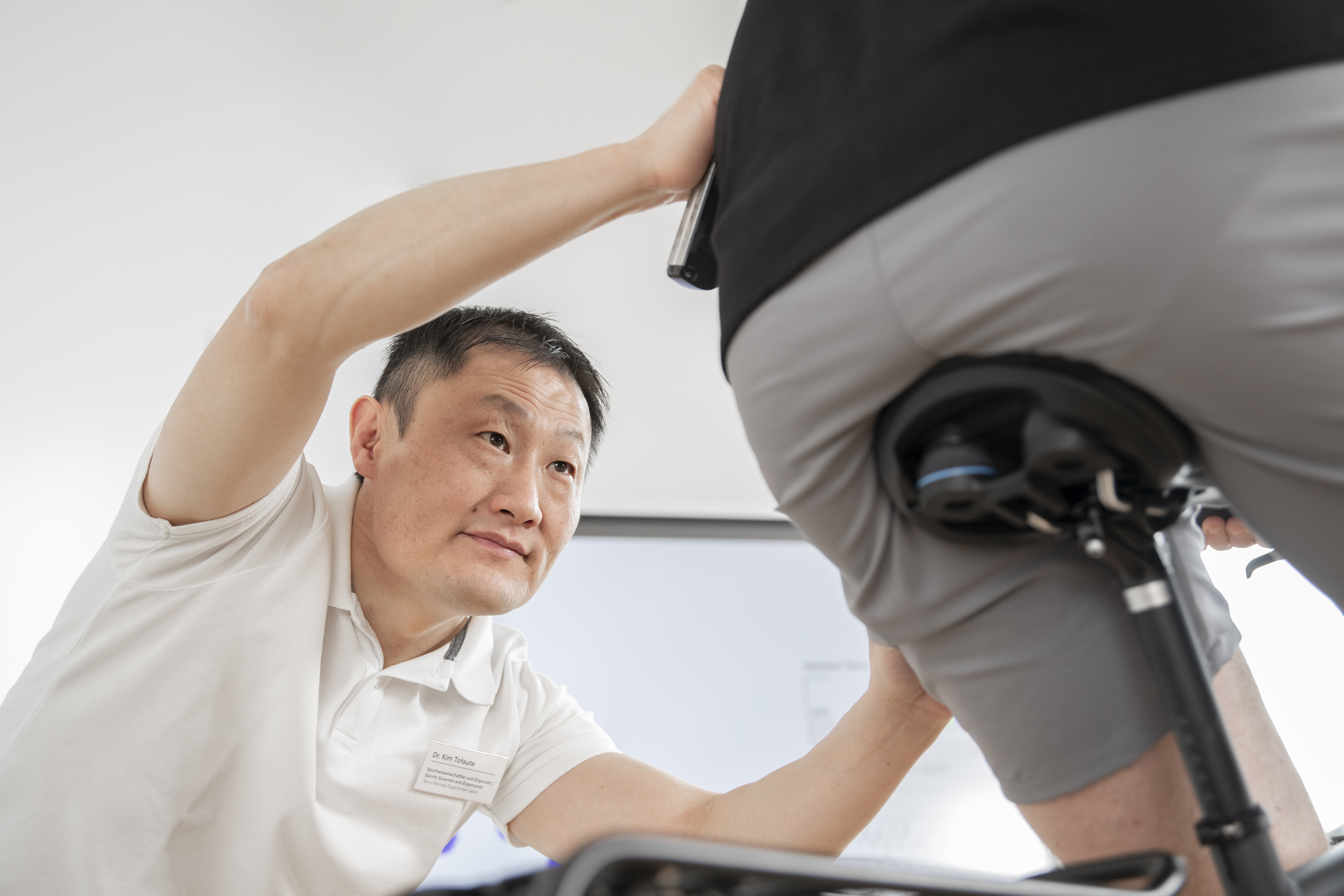This is why we have a BMR line on our saddles

Cyclists must adjust their saddle height every now and then. For example, because they have bought a new bike. Buying a new saddle also means that you have to readjust the saddle height and position, as bicycle saddles are all shaped and tuned differently.
When adjusting the saddle height, guesswork will only get you so far. It would be best to seek advice from a bike fitter at least once beforehand to apply or reproduce the measurements. If you don’t have access to a local bike fitter, the Ergon Fitting Box is a great option.
Finding the right measuring point – but how and where?
If you know your saddle height – measured from the center of the bottom bracket to the surface of the saddle – you are still faced with the problem of where to take the measurement on the saddle surface. After all, the distance from the center of the bottom bracket to the tip of the saddle is usually much shorter than to the center or even the back of a saddle. The Biomechanical Reference Line (BMR line) is used to provide a reference point that enables the reproducibility of the respective fitting measurements. It is a kind of meridian of the saddle that runs from one side to the other.
Is the biomechanical reference line of a saddle always the same?
The biomechanical reference line (BMR line) of bicycle saddles is a concept used in bicycle biomechanics and ergonomics to determine the optimal position of the saddle and to ensure that the rider adopts an efficient and comfortable riding position. Most reputable saddle manufacturers work with a BMR (or internationally BRP = Biomechanical Reference Point). These markings can be found on the saddles as well as in the product communication. However, there are different BMR measurements. Some manufacturers favor the BMR70 (e.g. Selle Italia) or the BMR80 (e.g. PRO/Japan). There are pros and cons to the different dimensions. For example, a smaller BMR makes sense for a very sporty saddle line. “After extensive studies and analyses, we at Ergon opted for the BMR75” says Dr Kim Tofaute, who holds a doctorate in sports ergonomics.

How does the BMR help with bike fitting?
The Biomechanical Reference Line improves the accuracy of saddle position and adjustment. This applies to all position measurements. One example: How can you measure the saddle height exactly? Cyclists need precise measuring points for this. The center of the bottom bracket is easy to determine and can also be defined precisely with the appropriate tools. However, the exact measuring point on the saddle is very difficult to determine, as it was previously unclear how far forward or back on the saddle you should measure. This is clearly defined and simplified with the BMR Line. From then on, the reference point is also responsible for setting the distance from the saddle to the handlebars and the saddle position, the seat height and the saddle angle.
Can the Biomechanical Reference Line be found on all Ergon saddles?
The BMR is can be found on new saddles from Ergon, the leading innovator in the field of ergonomics for the contact points between rider and bike (for example on the SR Tri and SR Allroad models). Gradually, this reference point will also be introduced on new product series of other saddle models. The Ergon Fitting Box Road/Gravelalso works with the Biomechanical Reference Line.
